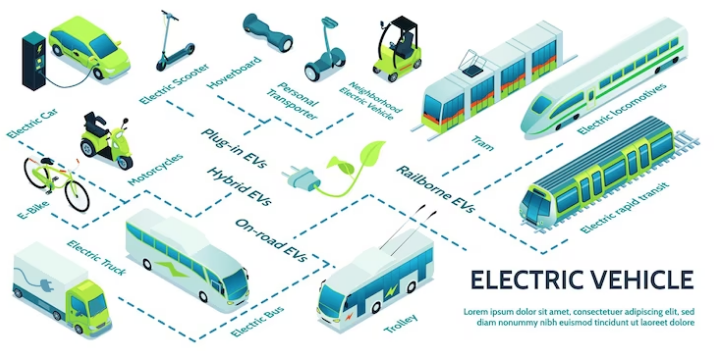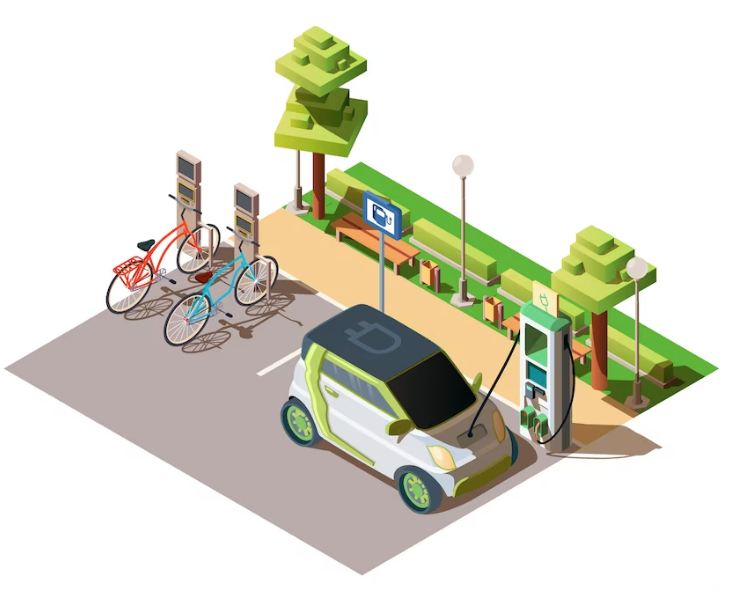As cities worldwide grapple with issues like air pollution, traffic congestion, and climate change, electric vehicles (EVs) are emerging as a critical solution for sustainable urban mobility. However, while EVs are often associated with individual ownership, they also have enormous potential for public transportation. In this article, we’ll explore the role of electric vehicles in public transportation and the benefits they can offer to cities and their residents.

Why Electric Vehicles are Ideal for Public Transportation
Electric vehicles are an ideal fit for public transportation for several reasons:
Reduced Emissions
Public transportation is a significant contributor to urban air pollution, which can have severe health impacts on residents. EVs emit no tailpipe emissions, which can significantly reduce air pollution in urban areas.
Lower Operating Costs
Electric vehicles have significantly lower operating costs than traditional diesel or gasoline-powered vehicles. This can help reduce the overall cost of public transportation, making it more affordable and accessible for riders.
Quiet and Comfortable
Electric vehicles are quiet and offer a smooth ride, making them more comfortable for passengers. This can help improve the overall rider experience and make public transportation a more attractive option for commuters.
Improved Safety
Electric vehicles have a lower center of gravity than traditional vehicles, which can improve stability and reduce the risk of rollover accidents. They are also less likely to catch fire or explode in a collision.
Flexibility
EVs can be designed to meet specific public transportation needs, such as bus rapid transit or light rail. They can also be designed to run on particular routes or serve specific populations, such as low-income communities or people with disabilities.
Examples of Electric Vehicles in Public Transportation
Electric vehicles are already being used in public transportation around the world. Here are a few examples:
Electric Buses
Electric buses are becoming increasingly popular in cities around the world. For example, Shenzhen, China, has replaced its fleet of over 16,000 buses with electric buses. Other cities like London and Los Angeles have committed to electrifying their bus fleets in the coming years.
Electric Trains
Electric trains have been used for many years, but new technologies like battery-electric trains make them even more sustainable. Battery-electric trains can operate on non-electrified tracks, reducing the need for expensive infrastructure upgrades.
Electric Ferries
Electric ferries are becoming an increasingly popular option for public transportation in coastal cities. For example, Oslo, Norway, has launched a fleet of electric ferries that run on renewable energy and produce no emissions.

Benefits of Electric Vehicles in Public Transportation
Benefits for public transportation:
Reduced Emissions
As mentioned earlier, electric vehicles produce no tailpipe emissions, which can significantly reduce air pollution in urban areas. This can have significant health benefits for residents and help cities meet their climate goals.
Cost Savings
Electric vehicles have significantly lower operating costs than traditional vehicles, which can help reduce the overall cost of public transportation. This can make it more affordable and accessible for riders.
Improved Rider Experience
Electric vehicles are quieter and offer a smoother ride than traditional vehicles, which can improve the overall rider experience. This can make public transportation a more attractive option for commuters.
Increased Resilience
Electric vehicles are less vulnerable to oil price spikes or supply disruptions, which can help increase the resilience of public transportation systems. They can also be powered by renewable energy sources, making them less vulnerable to fossil fuel supply chain disruptions.
